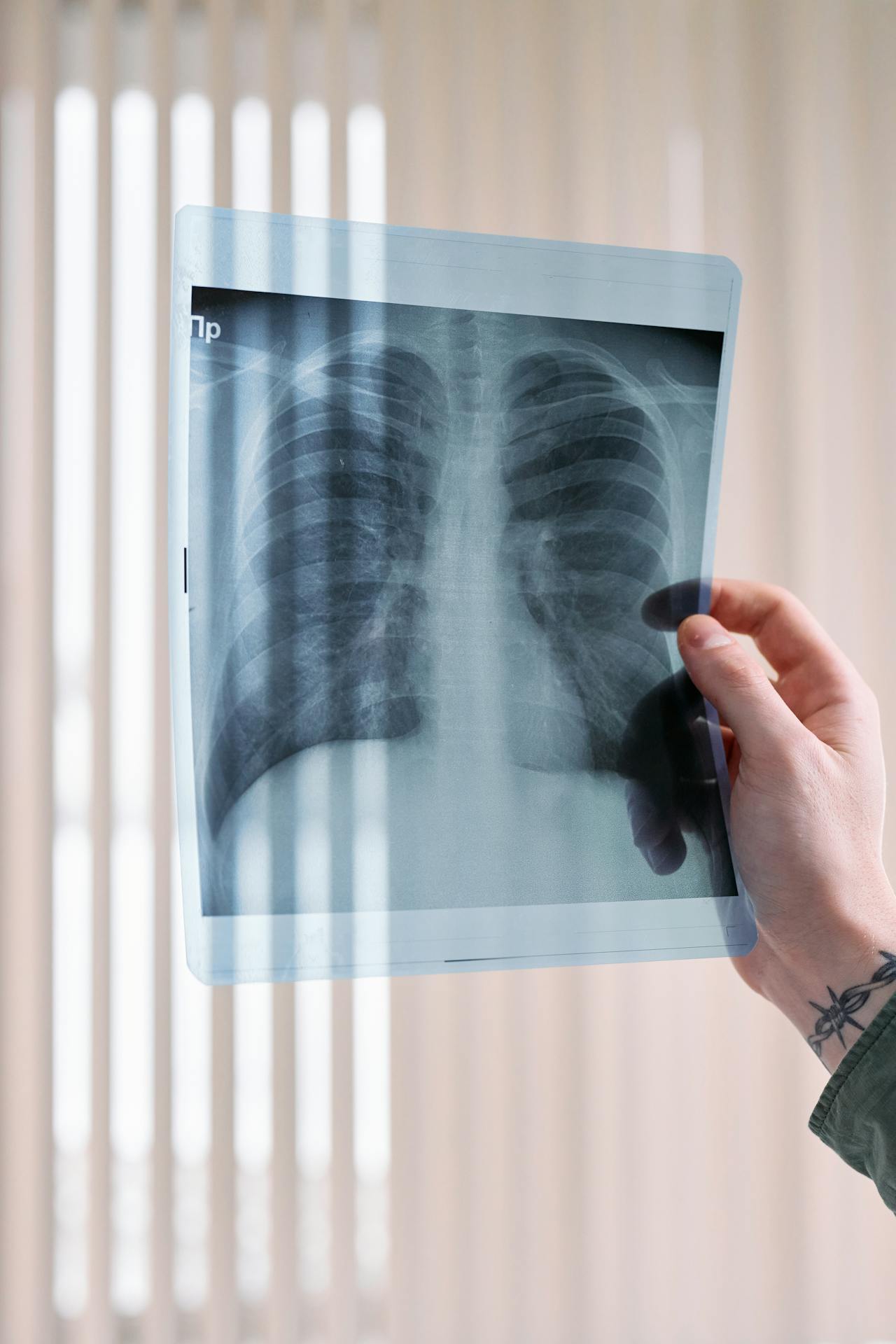Lung nodules, also known as pulmonary nodules, are relatively common in clinical practice and are often discovered incidentally. In fact, about 30% of patients who undergo a CT scan have at least one lung nodule. While the majority of these patients are those who smoke or were previously smokers, individuals who do not indulge in this habit can also develop pulmonary nodules. The question then is whether the lung nodule is cancerous.
What are lung nodules?
Lung nodules are abnormal growths that develop in the lung, typically surrounded by normal lung tissue. These nodules appear as round, white shadows and are often known as coin lesions due to their coin-like appearance. Most lung nodules are small and less than 10 mm, but some may be larger and can even be seen on a chest X-ray. They may occur as a result of a past lung infection or inflammation due to the presence of scar tissue.
When the lung becomes inflamed, a small clump of cells may develop, hardening over time causing a nodule. Apart from infections, other causes may also play a role in the development of this condition. These may range from autoimmune disorders, sarcoidosis to other infections (bacterial, fungal and parasitic), benign tumours and even cancer. Moreover, certain congenital lung abnormalities may also cause lung nodules.
What are the signs and symptoms of lung nodules?
Most patients with lung nodules do not present with any symptoms and are often too small to cause any respiratory issues. This is why most nodules are commonly detected incidentally during an X-ray or CT imaging when they come into the clinic for a different concern. However, many experts believe that with the rise in the usage of CT scans plus the advances in CT scan technology, the incidence of this condition has taken a steep incline. If a patient does experience any symptoms, they are most likely caused by an underlying condition that resulted in the formation of the lung nodule rather than the condition itself.
If symptoms do occur, they may cause the following:
- Fever
- Wheezing
- Dyspnea (shortness of breath)
- Hoarse voice
- Coughing up blood
- Persistent cough
- Fatigue
- Chest pain
- Loss of appetite
- Unintentional weight loss
It is important to note that, some patients may have trouble breathing and experience symptoms like coughing or wheezing, especially if the lung nodule is pressing against their airway.

Who are more likely to develop a lung nodule?
Those who smoke or have a history of smoking may be at risk of developing lung nodules. However, smoking is not the only risk factor. Here are some factors that may increase the incidence of lung nodules:
- Age (older adults)
- Exposure to dust eg: silica
- Secondhand tobacco exposure
- Past tuberculosis infections
- Family history of lung disease
- Family history of lung cancer
How do doctors detect lung nodules?
As mentioned earlier, most lung nodules are spotted incidentally on X-rays or CT scans. If the nodule is very small (<6 mm), the patient may not require a follow-up. However, in some cases, further evaluation might be needed, especially if the patient is in a high-risk group. They may also monitor the nodule (active surveillance) to determine its size and shape and to see if it grows over time, as this will provide clues in gauging if the nodule is cancerous or not. If the nodule is deemed to be suspicious, a biopsy will most likely be recommended. This involves the removal of a small tissue sample, which will be sent for further analysis by a pathologist.
Can lung nodules be cancerous?
In most cases, lung nodules are benign (not cancerous) and do not even need any treatment. Less than 5% of cases turn out to be cancerous, and a biopsy is necessary to confirm the malignancy. While lung cancer has a poor prognosis in its advanced stages, the outcome can be favourable if detected early. Therefore, if you are at high risk for developing lung cancer, it is advisable to undergo lung cancer screening.
High-risk groups
Individuals with more than a 20-pack-year history of smoking and are between the ages of 50 and 80.
Individuals who currently smoke or have quit within the past 15 years.
Those in the high-risk groups are recommended to undergo annual screening for lung cancer, which involves a low-dose CT scan of the chest (LDCT). It is similar to a normal CT scan but with a lower dose of radiation. This test usually takes only around five minutes and will provide a detailed image of your lungs.
When determining the likelihood of lung cancer, a few important characteristics will be taken into account: the size, shape, presence of calcification, and number of nodules. Larger and more irregular lung nodules are considered more worrisome while those that contain calcium are usually non-cancerous.
Furthermore, the location of the nodule will also be taken into consideration, with many studies indicating that nodules located in the upper lobe of the lung are more likely to be cancerous.
How are lung nodules and lung masses managed?
For those who have a lung infection, antibiotics may be provided to treat the condition. If the lung nodules are cancerous, doctors should have them surgically removed. The most commonly performed surgical procedure for malignant lung nodules is VATS (video-assisted thoracic surgery). The outlook of lung nodules will depend on whether they are cancerous or not and the stage of the disease.
If a patient has a growth larger than 4 cm, it is referred to as a lung mass and the risk of malignancy increases. Malignant masses often occur due to lung cancer, and management may involve both medical and surgical treatment options, including chemotherapy, radiation therapy, immunotherapy and lung resection. Patients may also be advised to follow a number of lifestyle changes, such as quitting smoking. Regular check-ups with your pulmonologist will also be advisable.


